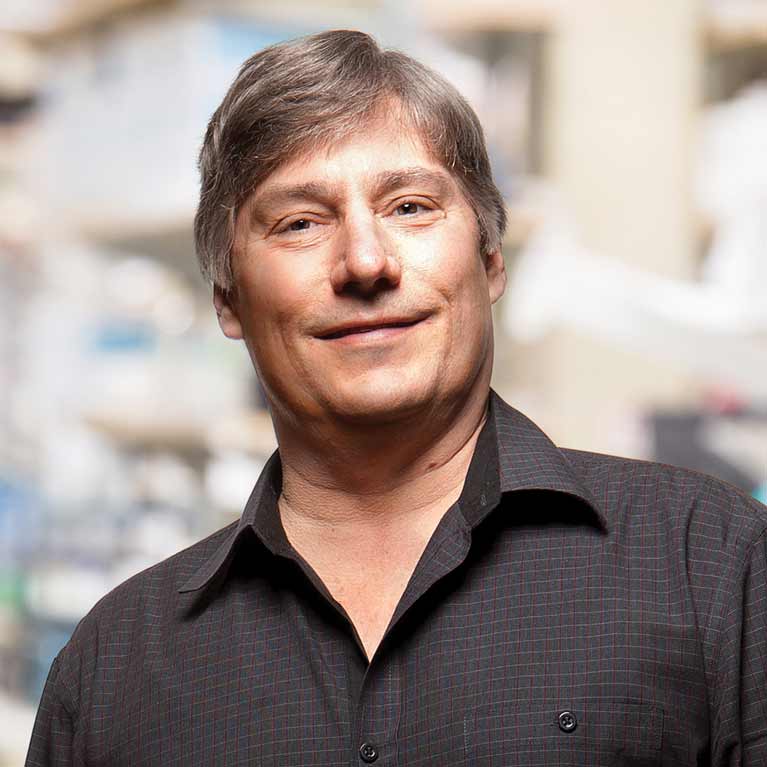Professor Emeritus

LA JOLLA—When you stare in puzzlement at an optical illusion, two distinct parts of the neocortex in your brain are hard at work: the primary visual cortex is receiving information …
LA JOLLA—A gene linked to mental disorders helps lays the foundation for a crucial brain structure during prenatal development, according to Salk Institute research published January 14, 2016 in Cell …
LA JOLLA–Scientists at the Salk Institute have discovered that the role of neurons–which are responsible for specific tasks in the brain–is much more flexible than previously believed.
By studying sensory neurons …
LA JOLLA–Salk Institute Professors Joseph Ecker and Dennis O’Leary have received the prestigious honor of being elected to the American Academy of Arts and Sciences (AAAS) class of 2015. One …
LA JOLLA—Scientists at the Salk Institute have uncovered details into a surprising—and crucial—link between brain development and a gene whose mutation is tied to breast and ovarian cancer. Aside from …
LA JOLLA,CA—Dennis O’Leary of the Salk Institute was the first scientist to show that the basic functional architecture of the cortex, the largest part of the human brain, was genetically …
LA JOLLA—Scientists at the Salk Institute for Biological Studies have demonstrated that sensory regions in the brain develop in a fundamentally different way than previously thought, a finding that may …
LA JOLLA—The National Institutes of Health has announced that the Salk Institute will receive $4.5 million to establish a Neuroscience Core Center, a new research center intended to accelerate brain …
LA JOLLA, CA—The cerebral cortex, the largest and most complex component of the brain, is unique to mammals and alone has evolved human specializations. Although at first all stem cells …
LA JOLLA, CA—Just like a conductor cueing musicians in an orchestra, Fgf10, a member of the fibroblast growth factor (Ffg) family of morphogens, lets brain stem cells …
La Jolla, CA – Neurons constituting the optic nerve wire up to the brain in a highly dynamic way. Cell bodies in the developing retina sprout processes, called axons, which …
La Jolla, CA – The Cajal Club has selected Dennis O’Leary, professor in the Molecular Neurobiology Laboratory, to receive the 2007 Krieg Cortical Discoverer Prize for his outstanding research on …
La Jolla, CA – In the cerebral cortex, the brain’s powerful central processing unit responsible for higher functions, specialized subdivisions known as areas are laid out like a map, but …
La Jolla, CA – The ability to hit a baseball or play a piano well is part practice and part innate talent. One side of the equation required …
La Jolla, CA – Wiring the developing brain is like creating a topiary garden. Shrubs don’t automatically assume the shape of ornamental elephants, and neither do immature …
La Jolla, CA – The brain, that exquisite network of billions of communicating cells, starts to take form with the genesis of nerve cells. Most …
La Jolla, CA – During embryonic development, thousands of nerves must be connected to muscles as part of a communication network that allows the newborn to move, breathe and lead …
La Jolla, CA – A Salk Institute research team has discovered how nature controls the degree of binocular vision in mammals, work that could have crucial implications for human stem-cell …
La Jolla, CA – Nerve cells firing in spontaneous waves create the brain’s first sharp visual images during a short but critical phase of development, Salk Institute researchers have found. …
La Jolla, CA – A crucial piece of the puzzle into how the eye becomes wired to the brain has been revealed by scientists at the Salk Institute for Biological …
La Jolla, CA – Salk Institute neuroscientists have obtained the first evidence that specific genes control how the cortex forms functional units during development. The cortex is the most recently …